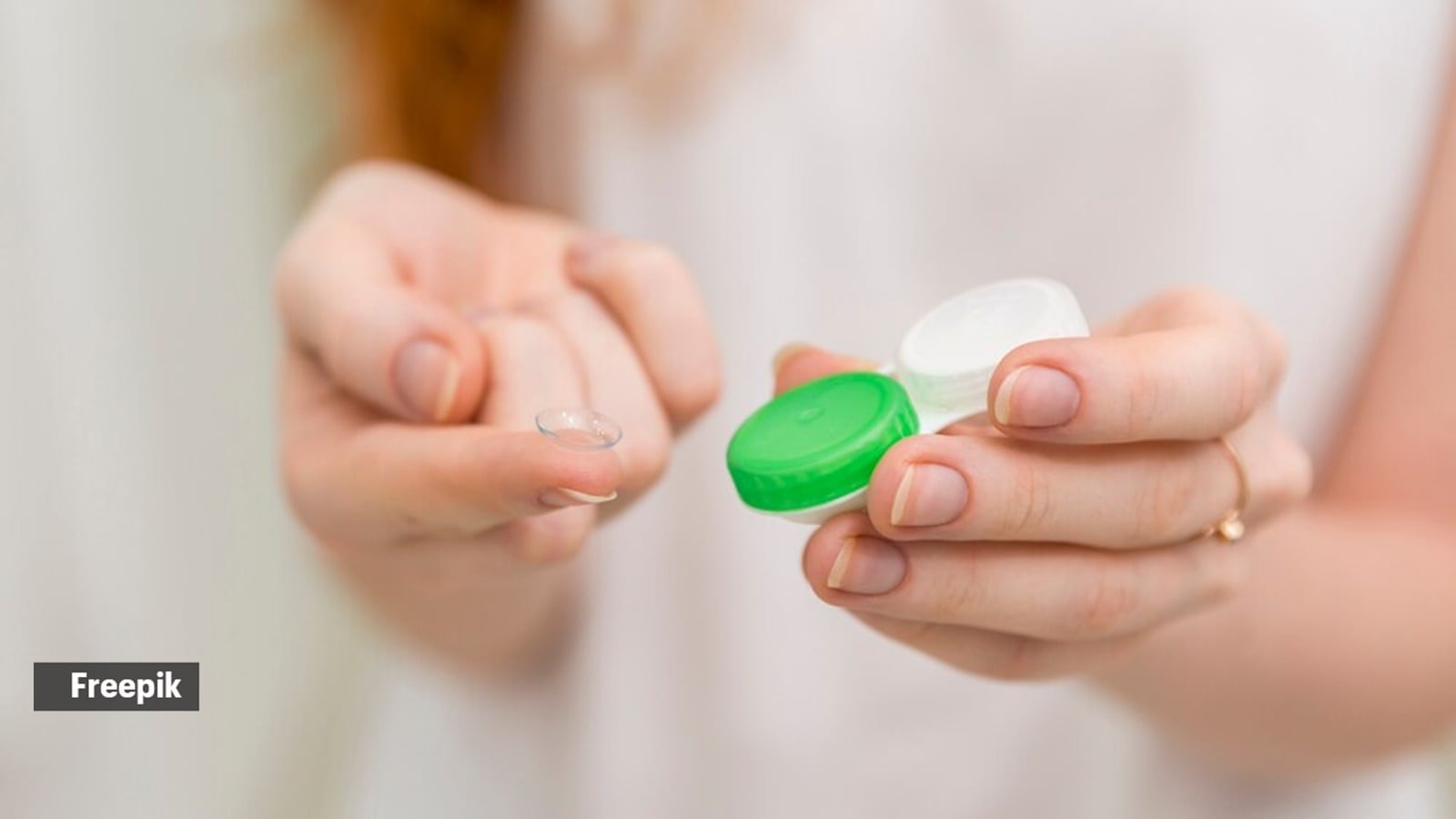Regular wearers may find it cumbersome to remove their contact lenses each time they come into contact with water. Tired of this constant interruption, if you find yourself slacking and hopping into your shower while wearing contacts, boy, do we have some news for you! That’s because we have expert answers for the burning question: What happens if you wear lenses and get into the shower, a hot tub, or go swimming?
“No, it’s not safe to wear contact lenses while showering,” stressed Dr Neha Yadav, Senior Resident, Regional Institute of Ophthalmology, PGIMS, Rohtak. Yadav said that shower water can host multiple parasites, one of which is Acanthamoeba, that survives in the cyst form in water and can cause severe corneal ulceration or Acanthamoeba keratitis.
What’s a corneal ulceration?
A corneal ulceration can be understood as a defect in the layers of the cornea, as a result of multiple injuries and scrapes sustained in the eye, said Dr. Simakurthy Sriram; CMO and Consultant VitreoRetina, Sankara Eye Hospital, Hyderabad. ” When contact lens wearers accidentally get poked in the eye, or get a cornea infection, chances of developing a corneal ulceration increases. Dr Sriram suggested watching out for pain in the eye, sclera reddening, or tears, or sudden vision loss.
“Improper handling of contact lenses, washing contacts in tap water, showering or swimming with contact lenses exacerbate this issue,” Dr Yadav added. According to her, people with pre-existing corneal abrasions and immunocompromised individuals are also at higher risk.
Understanding Acanthamoeba keratitis
“Just like corneal ulceration, Acanthamoeba keratitis is also an extremely uncommon yet serious form of eye infection. The cornea of your eye shows signs of yellowish discoloration and ulceration (thinning) in this case,” said Dr Sriram.
“Diagnosing Acanthamoeba keratitis can be challenging because its symptoms are similar to those of other eye infections. An eye doctor will perform a thorough examination, often including special tests like corneal scraping or cultures to identify the presence of the amoeba,” said Dr Sudhakar Potti, Chief Medical Officer, Sankara Eye Hospital, Guntur.
Dr Potti said that treatment typically involves a combination of anti-amoebic medications and antibiotics. “The process can be lengthy and may require frequent visits to the eye doctor. In severe cases, surgical intervention or corneal transplant might be necessary,” he told this outlet.
Story continues below this ad
 Do you wear contact lenses? (Source: Freepik)
Do you wear contact lenses? (Source: Freepik)
When should you be worried?
Typically manifesting unilaterally (in one eye), this form of keratitis can be bilateral in rare occasions.
“Severe pain is characteristic of Acanthamoeba keratitis,” shared Dr Reetha B T, Consultant – Ophthalmologist, Aster RV Hospital. She said that patients complain of reduced vision, redness of the eye, foreign body sensation in the eye, photophobia, watering, and discharge. However, these symptoms can be mild to severe.
How can you get it under control?
Yadav stated that early diagnosis and treatment are crucial to preserving vision. “While topical treatment involves the frequent instillation of chlorhexidine and PHMB eye drops, advanced cases may also require surgical debridement or even corneal transplantation,” she added. Dr Sriram clarified that in surgical debridement, the doctor performs delicate procedure in order to remove infected or damaged tissue from the eye in an attempt to enable better healing.
Precautions to be kept in mind
All the experts recommended removing contact lenses while washing your face, showering, or swimming, always cleaning contacts with proper cleaning solution, and storing them properly. You can also consult an ophthalmologist immediately if there’s any suspicion of infection, they added.
Story continues below this ad
DISCLAIMER: This article is based on information from the public domain and/or the experts we spoke to. Always consult your health practitioner before starting any routine.



